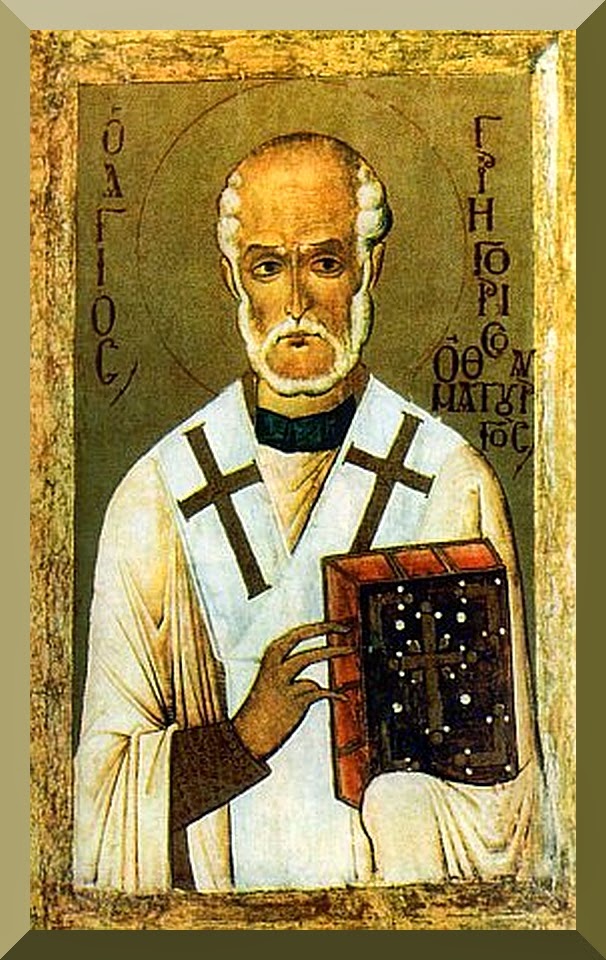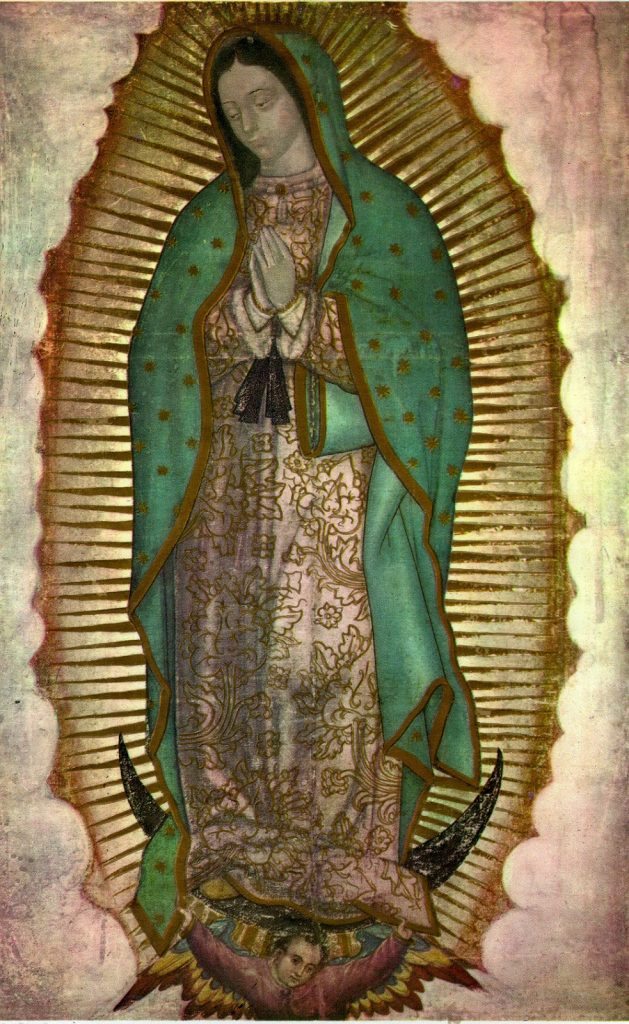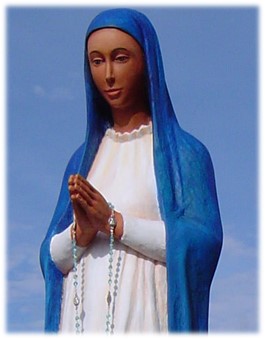Making an approximation of the number of Marian apparitions in the two-thousand-year history of Christianity is not possible. Different sources give differing data: from 900 to 21,000 testimonies of such phenomenon. The Church recognises about seventy of these.

How often does Mary appear?
The first documented description of an apparition was a eulogy by St. Gregory of Nyssa in the 4th century dedicated to St. Gregory Thaumaturgus (213-273) to whom Our Lady had appeared in the company of St. John the Apostle. It occurred in Neocaesarea about the year 231 during a retreat, which Gregory Thaumaturus attended before his consecration as bishop. During these visions, at the bidding of Mary, the Apostle explained to Gregory certain matters concerning the Holy Trinity and dictated a Profession of Faith.
In the first millennium of Christianity, Our Lady appeared to believers extremely rarely, there are only about thirty known accounts. Apparently, as with Saint Gregory, none of them had the approval of the Church. Most often they are legends associated with devotion to some saint or the establishment of a place of worship. The following centuries brought a sudden increase in the number of reports of Our Lady appearing. From the 12th century there are 275 known testimonies, from the 13th century – 772, and from the 14th century – 613. These include quite sparce accounts where someone claims to have had an apparition but neither the circumstances not the message from Mary is known. The growing number of people mentioning such encounters may be due to the extraordinary revival of faith and piety which had taken place in the Church. Accompanying it was the establishment of new religious orders, namely, among others, Carthusians, Cistercians, Franciscans and Dominicans. All of this encouraged sensitivity to mystical experiences. There also increasingly developed a devotion to Mary as the Mother of God. Apparitions during this period had the character of mystical visions, in which she appears together with Jesus, Apostles or other saints. She comes in order to strengthen the faith of the visionary and to hearten them. Often leaving them with indications for spiritual growth, helping to experience God and opening up to His grace. The Church indirectly confirmed the authenticity of some of the revelations by canonising the visionaries. The best known from this period are Saint Bridget of Sweden and Saint Gertrude of Helfta.

In the renaissance, there appears a new type of apparition of Mary: she begins to appear on her own and to give messages intended to revive or inspire the faith in some community. Warnings before crises or wars in the world: these messages are now addressed through the visionaries to the communities in which they live or even the whole Church. The most well known example – the only one recognised in this period (out of about seventy recorded) – is the appearance of Mary in Guadelupe, 1531.
Accounts from the 17th century are dominated by the intervention of Mary for the aim of converting, healing or the saving of the lives of individuals. From this time, there come many stories about the founding of various places of Marian devotion. In the following century when the political and cultural situation was not conducive to interest in supernatural apparitions (the industrial revolutions and the ideas of the Enlightenment), the number of alleged apparitions fell dramatically. Nevertheless, with its authority the Church has supported six out of thirty documented reports.
From the 19th century the number of reported appearances of Mary began to rise. In the 20th century the Church investigated 386 cases, but in the matter of most of them a decision is still awaited. It rejected the truth of 79 and confirmed 9. Describing the following as authentic: Fatima (Portugal), Beaueraing (Belgium), Banneaux (Belgium), Akita (Japan), Syracuse (Italy), Zeitoun (Egypt), Manila (Philippines), Bethany (Venezuela) and Kibeho (Rwanda).
To whom does Mary appear?
While visionaries in the first centuries were often mystics, from around the 16th century Mary chose conveyers of her messages people who were simple and uneducated but believing. With time it turned out that even the condition of faith did not need to be fulfilled . . . It seems that Our Lady is increasingly concerned about the simplicity of her messengers. This is perhaps why the most famous ones recognised involve children. However, when we take into account lesser know apparitions and ones for which the Church has not made a judgement, it turns out that children, women and men experience Marian visions equally. Visionaries come in all ages and from all backgrounds. It is significant that from the 17th century men were the most favoured group, for the following two centuries most relationships were with children, and in the 20th century with women. Among the visionaries there are consecrated people, as well as single people and married. Mary appears to an individual person, groups of people or crowds. This was the case in Zeitoun, in one of the districts of Cairo in 1968 when Our Lady became visible above a Coptic church seen by thousands of Christians and Muslims.
Where does Mary appear?
Most of the records of Marian apparitions come from Italy (c. 200), and a little less from France and Germany. Until the 7th century appearances of Mary were limited to the territories of today’s Turkey, Italy, France and Spain, which matches the reach of the Church in those days. It can be said that Mary accompanies the Church to every place reached by its mission. And so: in the 8th century there is the first report of an apparition in Germany, from the 16th century reports come from Mexico, Peru, Columbia and Ecuador.
It’s very significant that in the 20th century many apparitions of Our Lady have been recorded on the continent of Africa, namely in Egypt, South Africa and Rwanda. In this period the map of Marian apparitions has expanded the most, encompassing ever more countries on all continents. While in the 19th century there were Marian phenomena in sixteen countries of the world, by the end of the 20th century there were already fifty-three countries. Researchers investigating these events attribute great importance to the role of the media, who immediately report on the place of unusual events. It results in a multiplying effect of the previously know phenomenon by imitation: there quickly appear further reports of phenomena of very similar form.
How does Mary look?
Our Lady takes various forms of contact with people. Often images are made use of that bleed or cry, sometimes witnesses to these phenomena hear an interior voice (as in Akita). Some see nothing, only having the conviction of her presence. Others see only light, still others the outline of a figure. Finally, there are those who see the person of Mary in a very real way.
In every vision the figure of Our Lady is different. Usually she is seen in a long dress with waist band, a cloak and veil, however, the colours often vary. Most often she appears in a white or rose-coloured dress and a blue cloak. The visionaries rarely speak of a black, gold or red dress, as well as a green or gold cloak. Researchers of apparitions emphasise that the colours have a significant symbolism and can highlight the character of the message. When Mary is dressed in black it emphasises her sadness, in gold – her queenship. The symbolic character of clothes and colour is yet more clear when notice what Mary sometimes holds in her hands, e.g. a cross, a heart entwinned by a crown of thorns or pierced by a sword.
Our Lady uses the language, or even the dialect, of the people to whom she comes. She also has different skin colours: she appears like a European, Black African, Arabian, Hispanic, Asian. The colour of her hair is also varied as well hair style: some see a blonde, others a brunette or brown hair, some see straight hair others wavy, loose or braided.

What is it Mary expects?
It follows from the nature of Marian apparitions that each one of them is associated with a slightly different message, because it is tailored to the state of the visionary and the times in which it takes place. Mary is sometimes silent, sometimes replies to questions, and sometimes only relates a message. Sometimes she gives the impression of being passive waiting for the initiative of the seer, at other times she is very dynamic: heals, teaches prayer, performs a miracle. According to Father René Laurentin, a famous investigator of apparitions, all these activities serve five basic tasks that are concealed in what Mary communicates: mark the hidden presence of God, renewing the life of society, conversion of hearts, awakening faith and the resilience of the Church.